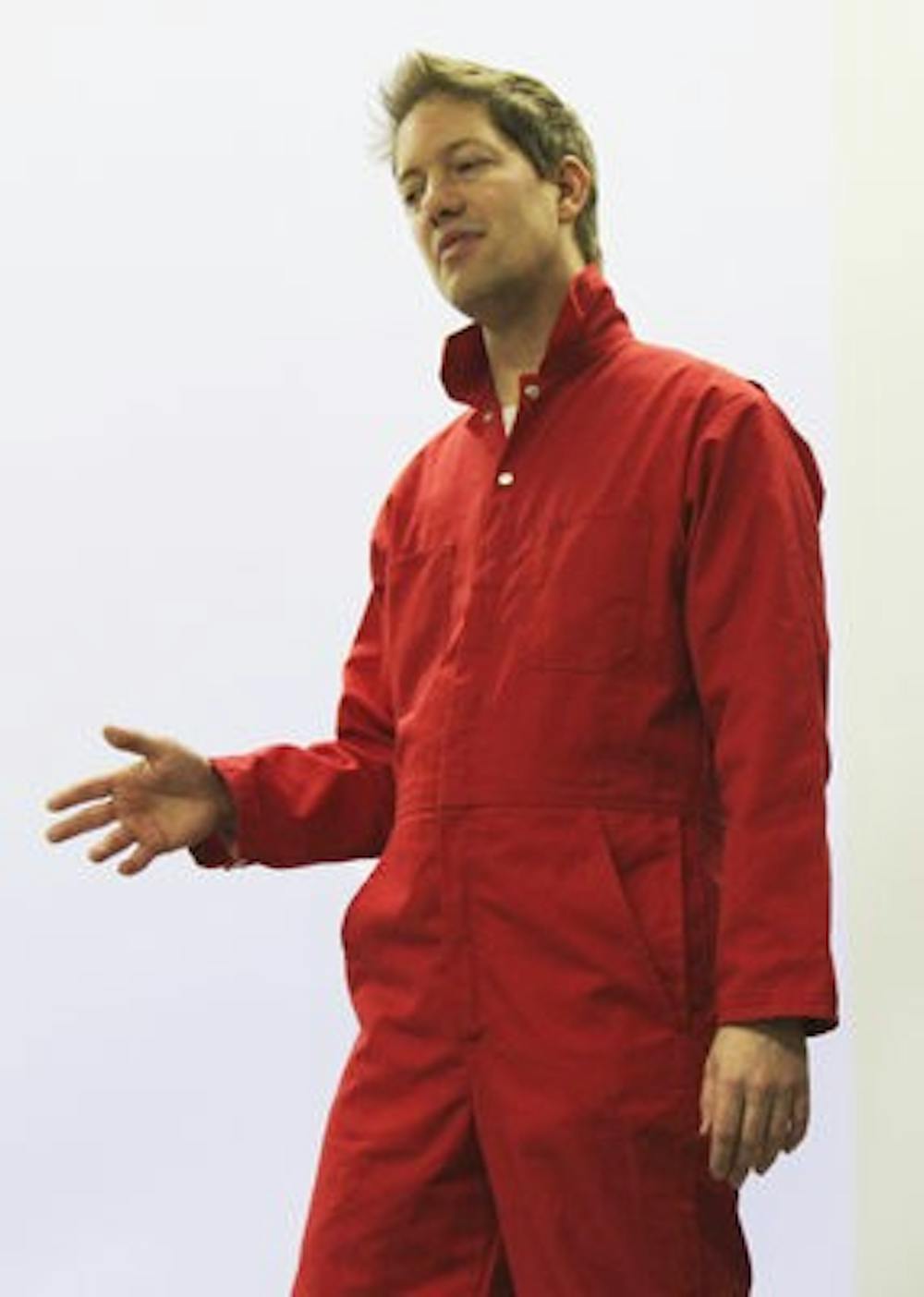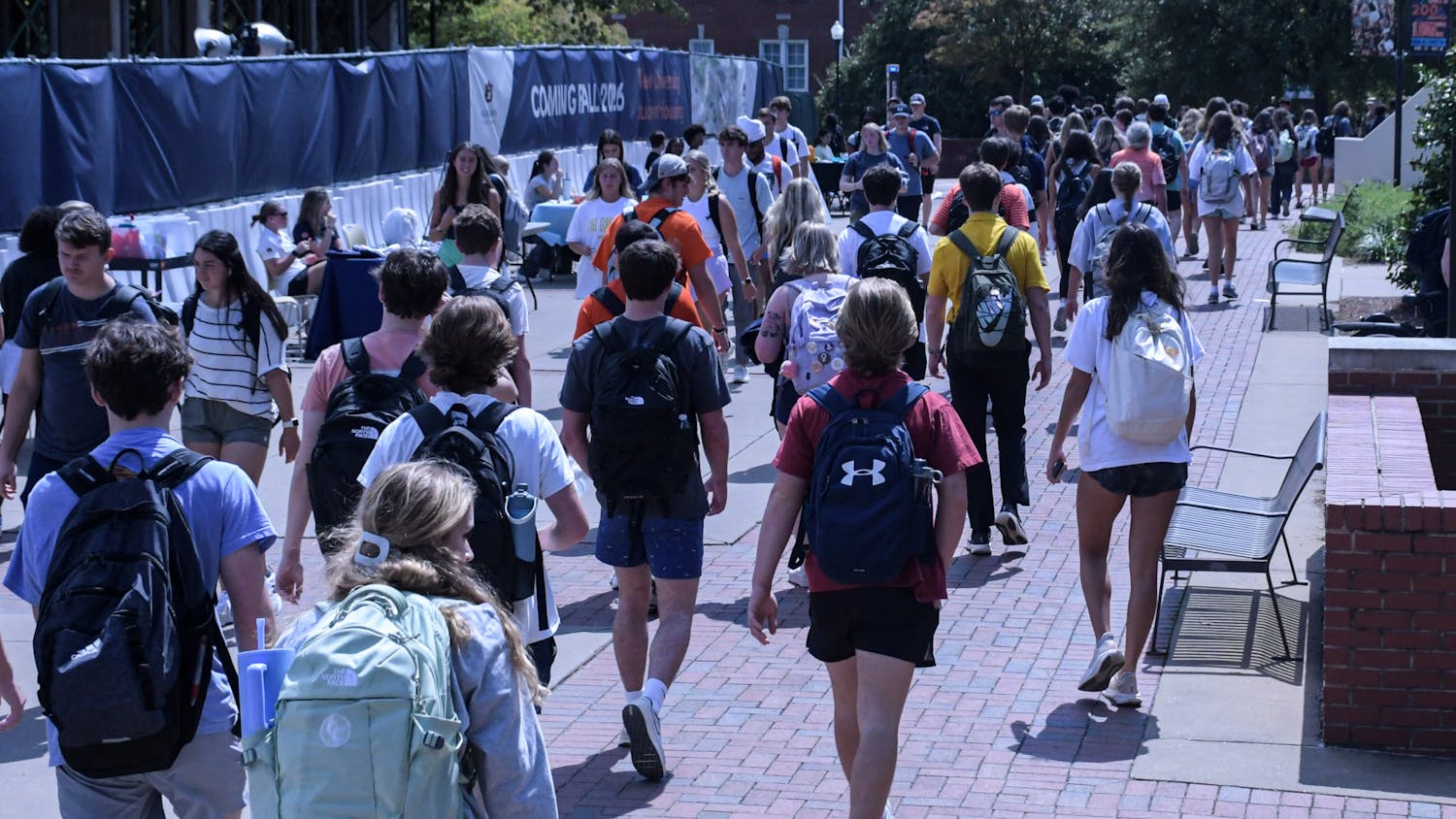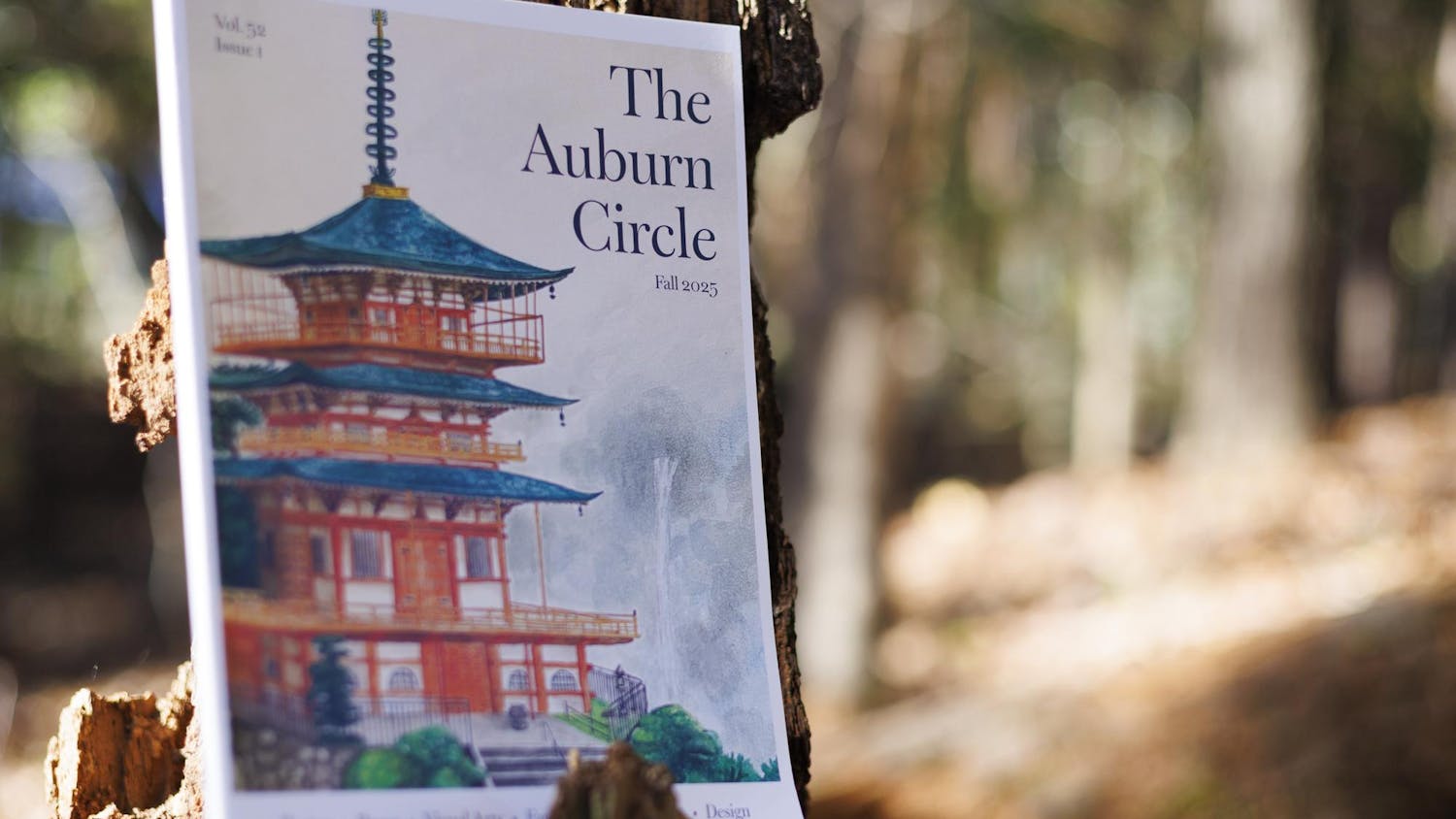Chia, a red jumpsuit and water are all Jeff Schmuki needs to create art.
Schmuki has been a visiting artist and professor at Auburn for the past two semesters and has been traveling the country since Hurricane Katrina.
Hurricane Katrina devastated Schmuki's neighborhood in Gulfport, Miss., and since then, he has become a nomadic artist, traveling to different parts of the country and the world.
"I had a home, and now everything I own is now in a backpack, which is kind of liberating in a way," Schmuki said.
After the hurricane, Schmuki said his art changed because of what he had seen and his need for portability in art.
"I'm not interested in art that is static," Schmuki said. "I'm interested in art that continually evolves and changes throughout the duration of the exhibition."
In Gulfport, Schmuki had a garden, and he said when he began traveling, he missed it.
Because of his nomadic lifestyle, Schmuki became interested in chia, which does not need soil to grow.
He began researching chia, and found that it is a source of protein, antioxidants and Omega-3s.
"I thought it was amazing, and I started making sculptures, onto which I planted chia," Schmuki said.
Chia can be grown hydroponically, or without soil, and Schmuki said this fit his nomadic lifestyle.
"The lack of soil represents my lack of place or roots," Schmuki said. "It's all easily collapsible and it's portable."
Schmuki said hydroponic gardening reduces water usage up to 75 percent and increases crop yields up to 300 percent.
Schmuki wants to use his art to bring attention to issues like sustainability.
Beauty is no longer the focus of his art.
"I believe in doing more with less," Schmuki said. "I will not have things own me like they do so many other people."
On first entering "Agritecture" at the gallery in
Biggin Hall, only the back of the exhibit is visible.
Schmuki said he did this intentionally so people would have to enter the gallery and interact.
"Because it takes me time to make art, they should spend some time thinking and experiencing it," Schmuki said.
Grass, chia, radishes, broccoli and wheat grass were grown on circles of felt hanging from floor-toceiling wedding organza fabric.
Pumps set up at the end of each row and white irrigation tubes supplied the rootless plants with water and nutrients.
A desk was placed next to the door, where Schmuki, often donning his red jumpsuit, would sit in the mornings and research, answer questions and give tours of the gallery.
The sounds of water pumps and short-wave radio transmissions from the aftermath of the hurricane filled the room.
The exhibit consisted of 35 to 40 percent recycled material, and Schmuki said his project could easily be reproduced using materials from a local hardware store.
Feb. 11, Schmuki gave a presentation about his project.
Katie Jackson, an editor for the College of Agriculture, said it was nice to hear someone speak about how science and art could work together.
Schmuki's art will raise awareness and bring attention to the College of Agriculture, Jackson said.
"A lot of things he talked about are already going on here," Jackson said.
Andy Holliday, senior in studio art, said he was skeptical of Schmuki's art at first, but changed his mind after hearing him speak.
"I found it to be very encouraging to maybe even pursue something like this myself," Holliday said.
While at Auburn, Schmuki teaches a 3-D design class.
"He's really into recycled materials," said Trey Howell, freshman in pre-graphic design. "Anything that you can recycle and reuse, he's all for it. No pollution, no trash. We use everything."
Schmuki left Feb. 12 to be a visiting artist in Rome, Italy, for two weeks.
Do you like this story? The Plainsman doesn't accept money from tuition or student fees, and we don't charge a subscription fee. But you can donate to support The Plainsman.





